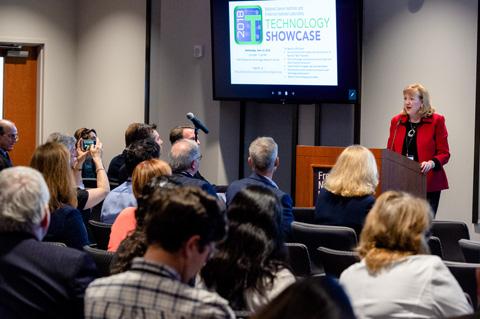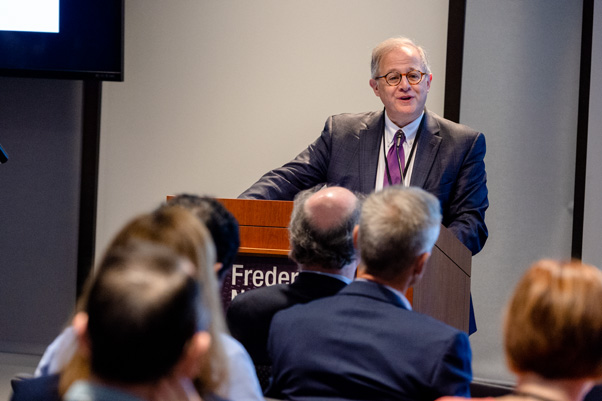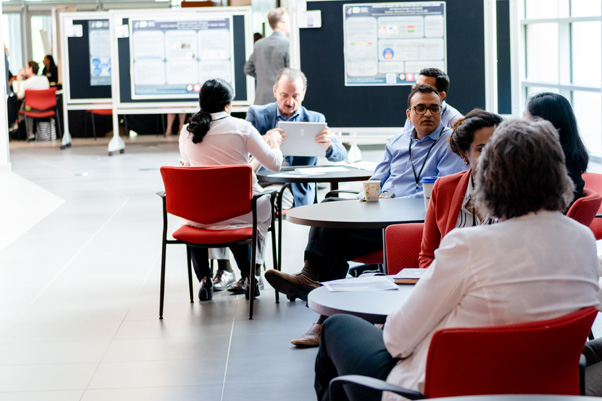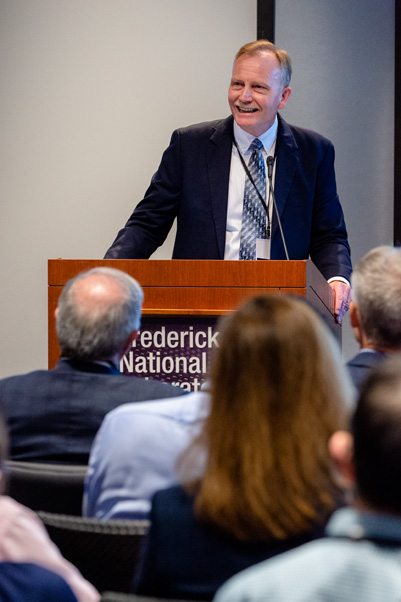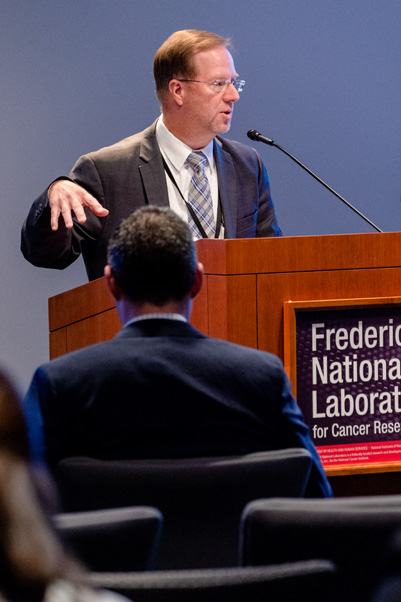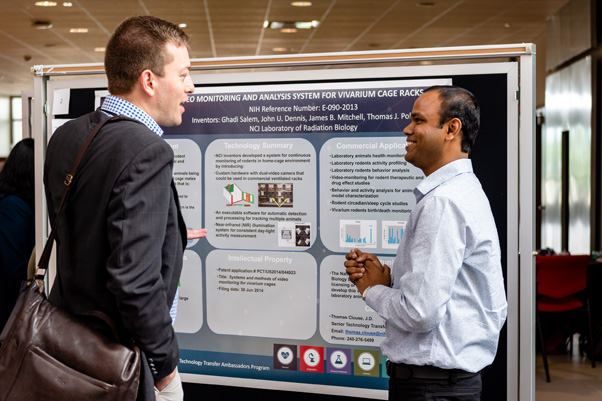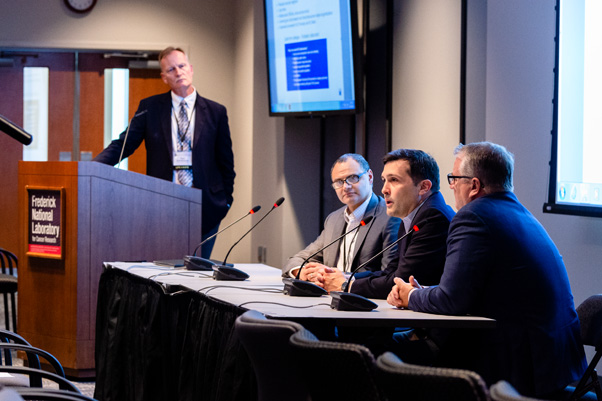“Collaboration” was the word of the day at the second annual Technology Showcase, held June 13 at the Advanced Technology Research Facility (ATRF). Hundreds of science and business professionals gathered to network and learn about technologies at the National Cancer Institute (NCI) and Frederick National Laboratory that are available for licensing and partnering.
NCI Director Ned Sharpless, M.D., delivered the keynote address, during which he called upon industry to collaborate with NCI and the Frederick National Laboratory to develop new cancer technologies. NCI and Frederick National Laboratory scientists echoed this desire during the subsequent technology presentations, which comprised the heart of the meeting. All told, six Frederick National Laboratory scientists presented their technologies and capabilities, offering potential partners a glimpse into the extensive resources and expertise that are available.
Nanoscale 3D Imaging of Cells and Tissue
Kedar Narayan, Ph.D., Cancer Research Technology Program, spoke about the focused ion beam scanning electron microscope (FIB-SEM), a 3D electron microscopic technology that can image samples ranging from large viruses (100 nanometers) to tissue samples (100 micrometers) at nanoscale resolutions. This range fills an important “imaging gap” left by traditional transmission electron microscopy (TEM). In addition, TEM images are in 2D, whereas FIB-SEM computationally combines the images to create high-resolution 3D images.
“Life occurs in 3D,” Narayan said, “so we should image it in 3D.”
Gene Editing in Cancer Research
Raj Chari, Ph.D., Laboratory Animal Sciences Program, discussed the CRISPR/Cas9 DNA-editing technology screening tools available at the Frederick National Laboratory. His laboratory is developing various flavors of CRISPR/Cas9 screening and is working with the NCI Center for Cancer Research to generate reagents, develop optimal targeting strategies, and create new mouse models. Prior to the discovery of CRISPR/Cas9, it was nearly impossible to introduce specific genetic changes in endogenous genes (those within an organism). However, Chari’s laboratory, which has been active for just five months, has already generated more than 20 models.
Renal Carcinoma Biomarkers
Josip Blonder, M.D., Cancer Research Technology Program, discussed patented mass-spectrometry-based proteomics technologies capable of identifying tumor proteins in blood circulating throughout the body, a process known as cancer biomarker discovery. These technologies are also able to detect cell surface targets in human cancer cell lines, and they can identify druggable targets found in human tumors that have been grafted onto mice without requiring microdissection.
Micro-Dose Calibrator for Preclinical Radiotracer Assays
Steven Adler, Ph.D., Clinical Monitoring Research Program, presented his micro-dose calibrator, which was developed with funding from the Laboratory-Directed Exploratory Research program. The patented device fills a measurement gap for radiation measurements in the 10 nanocurie to 100 microcurie range—a range that is critical for preclinical studies but for which no existing technologies are capable of providing an accurate measurement.
“I want measurement to be as easy as possible because the discovery process is so complicated,” Adler said.
Tools to Enable Discovery of RAS Therapeutics
Matt Holderfield, Ph.D., Cancer Research Technology Program, discussed how the RAS Initiative helps accelerate the research of partners from pharma, biotech, and academia by offering services ranging from assays to advice.
“The asset is that there are 50-plus people in this building focused on [RAS]. If you are interested in this target, we should talk,” Holderfield said.
He described two example collaborations testing potential KRAS inhibitors. KRAS is a protein that is mutated in 30 percent of cancers, making it a highly sought-after drug target. Although the first compound he discussed ultimately proved not to be a KRAS inhibitor, the second compound has shown positive results in cellular assays.
“For this target, it’s a huge advance,” he said.
Solutions for Integration, Access, and Visualization of Large-Scale Scientific Data
Uma Mudunuri, Advanced Biomedical Computing Center, presented several software solutions designed to help scientists manage the massive amount of data they generate. Along the way, she gave quick demonstrations of three:
- SysBioCube (https://sysbiocube-abcc.ncifcrf.gov/), an integrated biomedical research data access and analysis platform
- Center for Strategic Scientific Initiatives Data Coordinating Center (https://cssi-dcc.nci.nih.gov), a flexible data coordination framework housing biological cancer data
- BioDBnet (https://biodbnet-abcc.ncifcrf.gov), an application for integrating biological databases
“Data can be daunting,” Mudunuri said. “But our motto is that the solutions should not be. They should be as seamless as possible.”
Moving Forward
Following the presentations, several participants reached out to the Frederick National Laboratory presenters and expressed interest in the technologies and potential collaborations.
The Technology Showcase itself is a successful collaboration between the Frederick National Laboratory, the NCI Technology Transfer Center, TEDCO, the City of Frederick, and Frederick County. This team has already begun planning the third annual Technology Showcase, which will be held on June 12, 2019.


